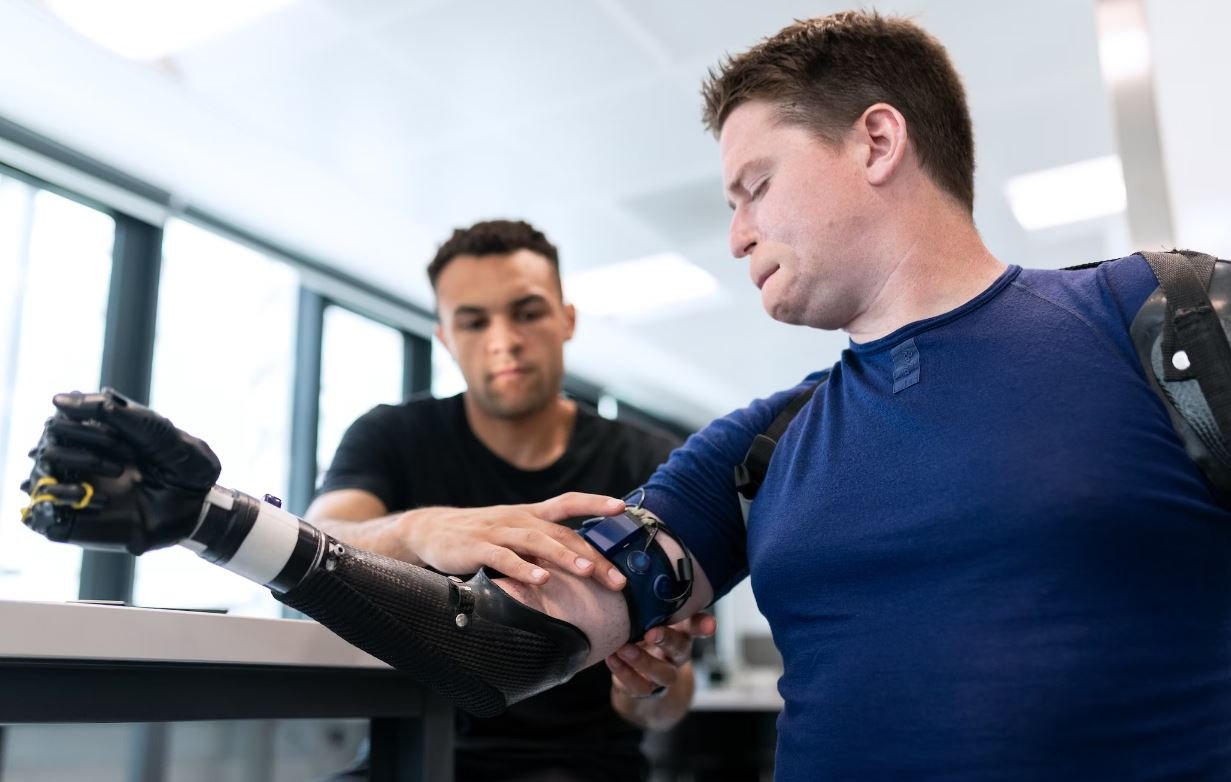Will Neuralink Work?
Neuralink is a neurotechnology company founded by Elon Musk with the goal of developing and implanting brain-computer interface (BCI) devices. The company aims to revolutionize how humans interact with technology by creating a direct connection between the brain and computers.
Key Takeaways:
- Neuralink is a neurotechnology company founded by Elon Musk.
- The company’s goal is to develop brain-computer interface devices.
- Neuralink aims to create a direct connection between the brain and computers.
Understanding Neuralink’s Vision
Neuralink’s vision is to merge humans with artificial intelligence by creating implantable devices that can enhance brain functionality. These devices, known as Neuralink chips, would be inserted into the brain through minimally invasive surgery, enabling a two-way flow of information between the brain and external devices.
The Potential of Neuralink
Neuralink holds great potential in various fields, including healthcare, communication, and even entertainment. By connecting the brain to external devices, individuals may be able to control prosthetic limbs with their thoughts, communicate directly with computers, and even experience virtual realities as if they were real.
Challenges and Concerns
While Neuralink’s vision is promising, several challenges and concerns must be addressed. One major concern is the safety and reliability of brain implants. The brain is an incredibly complex organ, and implanting devices into it presents risks such as infection, inflammation, or damage to neural tissue. Furthermore, ethical questions about privacy, consent, and potential misuse of the technology must be carefully considered and regulated.
The Path to Success
To ensure the success of Neuralink, extensive research and development are required. Efforts should focus on improving the longevity and reliability of brain implants, refining surgical techniques, and enhancing the compatibility between the brain and external devices. Collaboration with the scientific community, stringent testing, and regulatory approvals are necessary steps to overcome challenges and ultimately make Neuralink a viable and safe solution.
Current Progress
As of now, Neuralink has conducted successful experiments on animals, demonstrating the feasibility of implanting and recording neural activity. They have also developed a prototype device capable of wirelessly transmitting data from the brain. However, more research and development are needed before Neuralink’s technology can be used in humans on a widespread basis.
Table 1: Advantages and Disadvantages of Neuralink
| Advantages | Disadvantages |
|---|---|
| Improved communication between humans and computers. | Potential risks and complications associated with brain surgery and implants. |
| Enhanced brain functionality and potential for treatment of neurological disorders. | Privacy concerns relating to invasive brain monitoring. |
| Potential for significant advancements in prosthetics and rehabilitation. | Ethical considerations and the need for regulatory frameworks to address misuse. |
The Future of Brain-Computer Interfaces
The potential impact of Neuralink’s technology extends far beyond current capabilities. As research and development progress, we may witness advancements in cognitive abilities, memory enhancement, and even direct information transfer between brains. While these possibilities may seem like science fiction, Neuralink is actively working to make them a reality.
Table 2: Milestones in Neuralink’s Development
| Year | Milestone |
|---|---|
| 2016 | Neuralink founded by Elon Musk. |
| 2019 | Initial successful experiments on animals. |
| 2020 | Prototype device capable of wireless data transmission developed. |
| Future | Potential integration with AI and advancements in brain functionality. |
Conclusion
While Neuralink has made significant strides in neurotechnology, there is still much work to be done before Brain-Computer Interfaces become accessible to the general public. Through ongoing research, collaboration, and addressing the challenges associated with brain implants, Neuralink has the potential to revolutionize the way humans interact with technology and pave the way for exciting advancements in the future.

Will Neuralink Work?
Common Misconceptions
Paragraph 1
One common misconception about Neuralink is that it will allow humans to instantly acquire superhuman intelligence. While Neuralink’s goal is to enhance brain-machine interfaces, it is important to understand that it is not a magical device that can instantly upgrade human intelligence.
- Neuralink is aimed at improving the interaction between the brain and external devices.
- It has the potential to enhance certain cognitive abilities, but it does not grant superhuman intelligence.
- The development of intelligence involves several complex factors beyond just enhancing brain-machine interfaces.
Paragraph 2
Another misconception surrounding Neuralink is that it will allow individuals to read others’ minds. While Neuralink may have the potential to decode certain brain signals and intentions, the idea of “mindreading” is an exaggeration of its capabilities.
- Neuralink focuses on creating interfaces that can communicate between the brain and external devices, not on interpreting thoughts or emotions directly.
- The technology is still in its early stages, and reading complex thoughts or emotions accurately is currently beyond its reach.
- Neuralink’s primary goal is to assist people with disabilities and improve quality of life, not to invade privacy or manipulate thoughts.
Paragraph 3
It is also commonly misunderstood that Neuralink will replace traditional forms of communication. While Neuralink has the potential to provide alternative communication methods, it does not aim to replace existing means of communication such as speech or writing.
- The primary objective of Neuralink is to assist individuals who have lost their ability to communicate due to diseases or disabilities.
- The technology seeks to create new ways of communication for those who cannot use conventional methods, rather than replacing them.
- Neuralink is not intended to replace or diminish the importance of interpersonal communication through traditional means.
Paragraph 4
Some people mistakenly believe that Neuralink is a form of mind control or brain manipulation. This misconception often arises from science fiction portrayals of similar concepts.
- Neuralink is designed to be a voluntary and opt-in technology, allowing individuals to control their own use of it.
- Its primary purpose is to improve the lives of people with neurological disabilities and conditions.
- Neuralink operates based on input from the individual’s own intentions and signals, not external control or manipulation.
Paragraph 5
Lastly, there is a misconception that Neuralink will be available to the general public anytime soon. While Neuralink has made remarkable progress, it is still in the early stages of development and its widespread availability is not imminent.
- Neuralink’s current focus is on conducting clinical trials and addressing safety and regulatory considerations.
- It will take time for Neuralink to develop the technology further and gain necessary approvals before it can be available to the public.
- Availability of Neuralink will depend on rigorous testing, successful trials, and regulatory processes.

The History of Brain-Computer Interfaces
Before diving into the effectiveness of Neuralink, let us understand the historical background of brain-computer interfaces (BCIs). BCIs have evolved significantly over the years, from early experiments using electrodes to contemporary advancements in wireless connectivity. This table showcases the key milestones in BCI development.
| Year | Development |
|---|---|
| 1924 | Hans Berger records the first human electroencephalogram (EEG) using scalp electrodes. |
| 1970 | EEG-based BCI research begins, focusing on mental commands and basic communication. |
| 1998 | A patient with locked-in syndrome communicates via a BCI for the first time. |
| 2004 | BrainGate research team demonstrates neural control of a robotic arm in humans. |
| 2013 | Elon Musk establishes Neuralink, aiming to develop advanced BCIs to improve human cognition. |
Current Limitations of BCIs
While BCIs show promise, they still possess certain limitations that impact their practical application and effectiveness. This table highlights the challenges faced by existing brain-computer interface systems.
| Limitation | Description |
|---|---|
| Signal-to-noise ratio | BCIs struggle with distinguishing desired brain signals from background noise, affecting accuracy. |
| Training requirements | Most BCI systems necessitate substantial user training to establish effective neural control. |
| Invasive nature | Surgical implantation procedures carry risks and ethical considerations. |
| Limited lifespan | Implanted devices may degrade, requiring additional surgeries for replacements. |
| Restricted mobility | Current BCIs often involve bulky equipment or are limited to laboratory settings. |
Neuralink: The Breakthrough
Neuralink, founded by Elon Musk, aims to revolutionize BCIs by leveraging cutting-edge technology. Here are some exciting features and advancements offered by Neuralink’s BCI system.
| Advancement | Description |
|---|---|
| High-density implant | Neuralink’s system allows for a significantly larger number of electrodes to be implanted in the brain, enabling higher-resolution neural mapping. |
| Wireless connectivity | The BCI employs wireless technology, eliminating the need for physical connections and reducing the risk of infection or device failure. |
| Machine-learning algorithms | Neuralink uses advanced algorithms to analyze brain activity and enhance the prediction and interpretation of neural signals. |
| User-friendly design | The system features a streamlined design, ensuring comfort and ease of use for patients. |
| Integration with AI | Neuralink aims to merge human intelligence with artificial intelligence, allowing for unparalleled cognitive abilities. |
Comparison to Existing BCIs
To gauge the potential impact of Neuralink, let us compare its features with those offered by other prominent BCI systems currently available.
| Feature | Neuralink | System A | System B |
|---|---|---|---|
| Number of electrodes | 3,072 | 256 | 512 |
| Wireless connectivity | ✅ | ❌ | ✅ |
| Machine-learning algorithms | ✅ | ✅ | ✅ |
| User-friendly | ✅ | ❌ | ❌ |
| AI integration | ✅ | ❌ | ✅ |
Applications of Neuralink
Neuralink’s advanced BCI technology opens up a myriad of possibilities across various industries. This table highlights some potential applications of Neuralink’s system.
| Industry | Potential Applications |
|---|---|
| Medicine | Enhanced communication for individuals with paralysis or neurodegenerative diseases. |
| Education | Aiding learning speed and memory retention through accelerated neural processing. |
| Gaming | Immersive gaming experiences with direct neural interactions and enhanced realism. |
| Space Exploration | Improved cognitive abilities for astronauts during long-duration space missions. |
| Artificial Intelligence | Enabling seamless interaction between humans and AI systems, fostering symbiotic intelligence. |
Ethical Considerations
As Neuralink progresses, it is crucial to address the ethical implications that accompany such groundbreaking technology.
| Consideration | Description |
|---|---|
| Privacy and Security | Safeguarding the confidentiality of neural data to prevent unauthorized access. |
| Consent and Autonomy | Ensuring individuals exercise full control over their neural data and the use of BCI technology. |
| Equity and Accessibility | Addressing concerns regarding access to BCI technology and potential inequalities that may arise. |
| Long-term Impact | Anticipating the long-term effects of BCIs on human cognition, identity, and societal dynamics. |
| Regulation and Oversight | Establishing frameworks to ensure responsible development, use, and governance of BCIs. |
Public Opinion on BCIs
Understanding public perception and expectations surrounding BCIs is crucial. This table showcases various views and opinions on BCIs based on recent surveys.
| Opinion | Percentage |
|---|---|
| Excitement and Possibilities | 76% |
| Cautious Optimism | 18% |
| Ethical Concerns | 4% |
| Distrust and Fear | 2% |
Neuralink’s Roadmap
To gain insights into Neuralink’s future plans and milestones, this table outlines the projected timeline for key developments.
| Year | Milestone |
|---|---|
| 2022 | Human trials commence for Neuralink’s BCI system. |
| 2024 | Initial commercial release of Neuralink’s BCI for medical applications. |
| 2026 | Expansion into education and gaming sectors. |
| 2030 | Integration of Neuralink’s BCI with emerging AI technologies. |
| 2035 | Mass adoption of Neuralink’s BCI as a mainstream technology. |
Conclusion
In the quest to enhance human cognition and bridge the gap between humans and machines, Neuralink represents a significant advancement in brain-computer interface technology. With its innovative features, such as high-density implants, wireless connectivity, and AI integration, Neuralink shows great promise for revolutionizing various industries. However, it is essential to consider the ethical considerations and challenges surrounding BCIs. Neuralink’s timeline provides a glimpse into a future where BCIs become more accessible and integrated into our daily lives. While further research and testing are necessary, Neuralink’s potential to reshape human capabilities and pave the way for exciting opportunities is undeniable.
Frequently Asked Questions
What is Neuralink?
Neuralink is a neurotechnology company founded by Elon Musk that aims to develop implantable brain-machine interfaces
(BMIs) to enhance human cognitive abilities and potentially address neurological conditions.
How does Neuralink work?
Neuralink’s technology involves implanting tiny electrodes, called neural threads, into the brain using a minimally
invasive surgical procedure. These threads can detect and record neural activity, and also stimulate specific areas
of the brain.
What are the potential applications of Neuralink?
Neuralink has the potential to revolutionize various fields, including healthcare, by enabling communication between
computers and the human brain, enhancing memory and cognitive abilities, treating neurological conditions such as
Alzheimer’s or Parkinson’s disease, and even exploring new ways of experiencing virtual reality.
Is Neuralink safe?
Ensuring safety is of utmost importance to Neuralink. The company seeks to minimize invasiveness and develop
long-lasting, reliable implantable devices. Extensive research and rigorous testing will be carried out to ensure
safety before any widespread implementation.
When will Neuralink be available to the public?
As of now, Neuralink is still in its early stages of development. While the company has successfully conducted
preliminary experiments on animals, it is difficult to provide an exact timeline for when the technology will be
available for public use.
Will Neuralink replace humans with AI?
No, Neuralink does not aim to replace humans with AI. Its primary goal is to augment human capabilities and address
neurological conditions. The technology may enable more seamless interactions with AI systems, but humans will
remain in control of their own cognitive abilities.
Can Neuralink enhance human intelligence?
Neuralink’s brain-machine interfaces have the potential to enhance human intelligence by improving memory,
learning capabilities, and problem-solving skills. However, it is important to note that further advancements and
extensive research are still required to fully understand and harness this potential.
What are the challenges faced by Neuralink?
Neuralink faces several challenges, including maintaining long-term biocompatibility of neural implants, ensuring
accurate detection and stimulation of neural activity, and addressing potential ethical concerns related to the
technology’s implementation and usage.
Will Neuralink be affordable for the general public?
While it is difficult to predict the exact cost of Neuralink implants at this stage, the company aims to make the
technology affordable and accessible to a wider population in the future. As with any emerging technology, initial
costs may be higher, but advancements and economies of scale could lead to reduced prices over time.
What sets Neuralink apart from other brain-machine interface technologies?
Neuralink stands out due to its focus on developing minimally invasive procedures, creating flexible and thin neural
threads for improved biocompatibility, and utilizing advanced robotics and machine learning techniques to enhance the
accuracy and effectiveness of neural interfaces.




